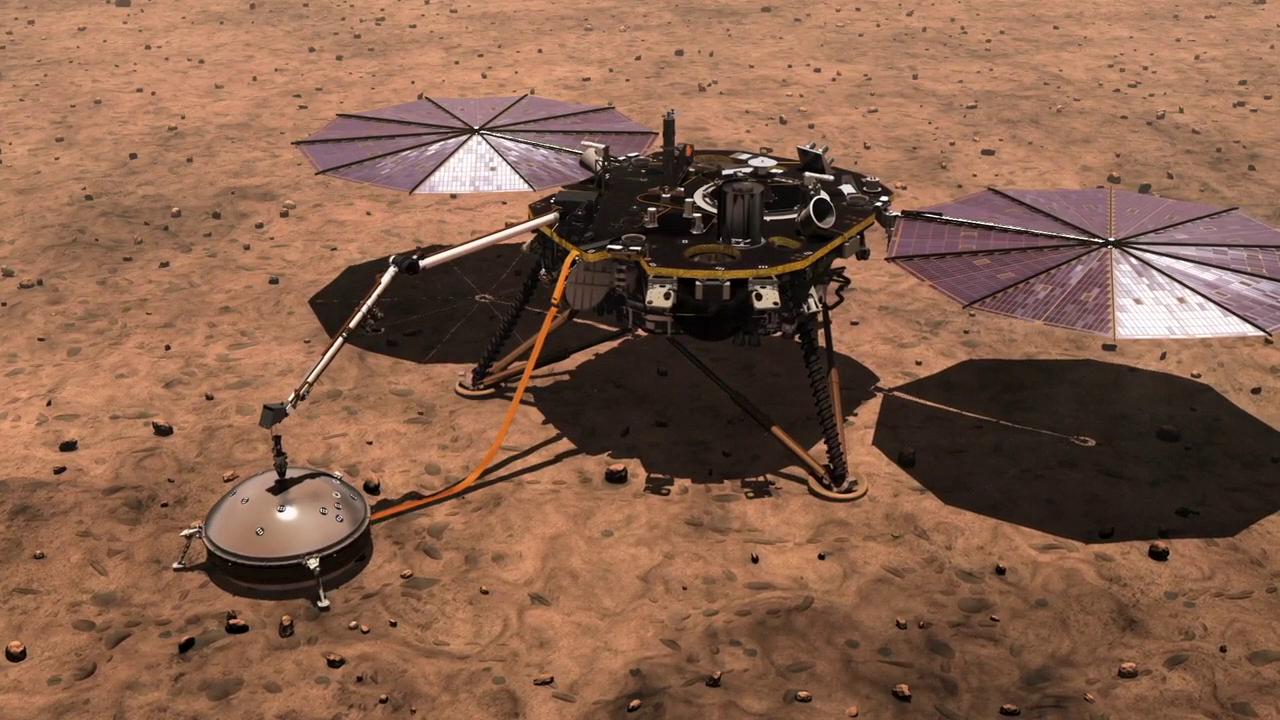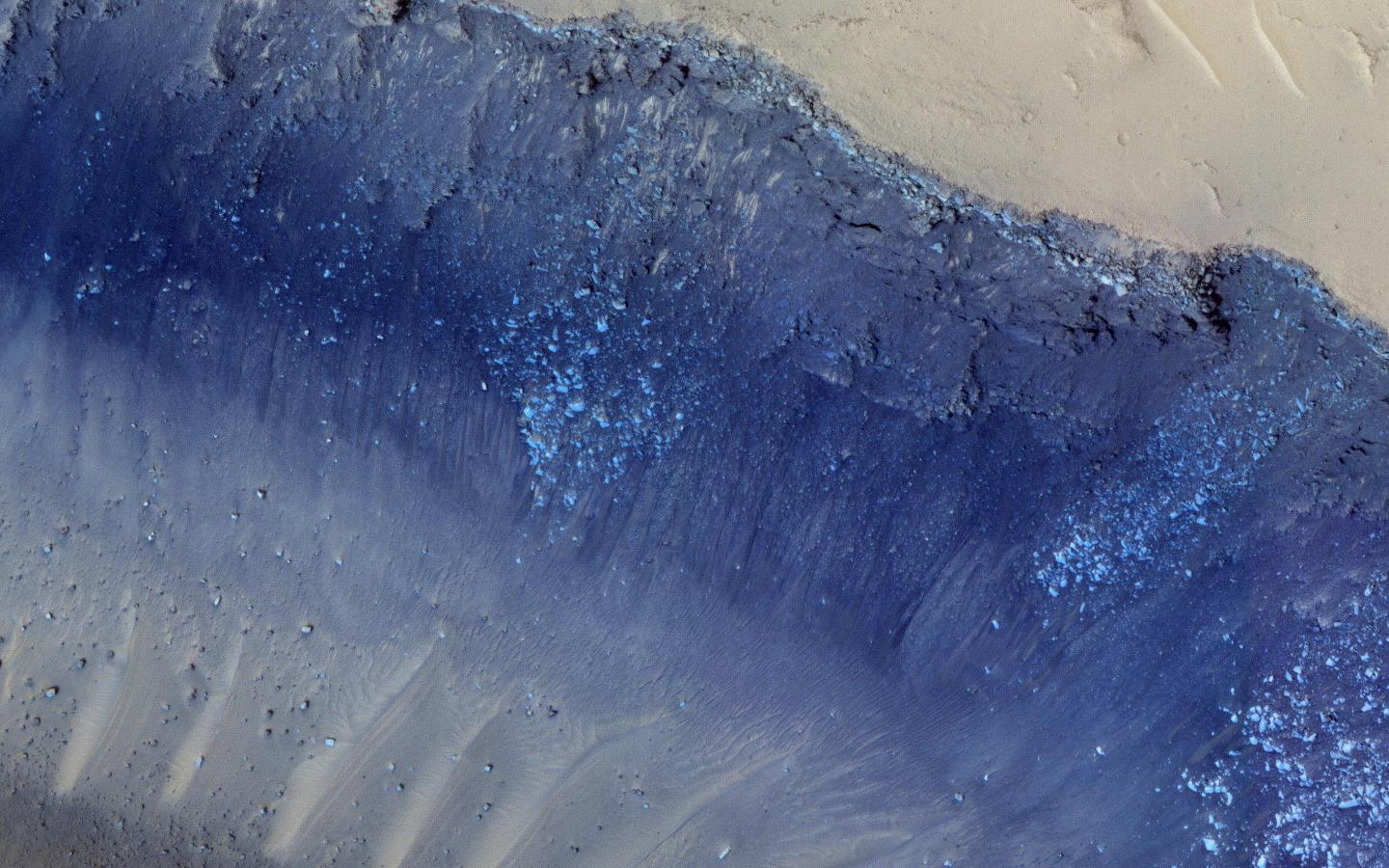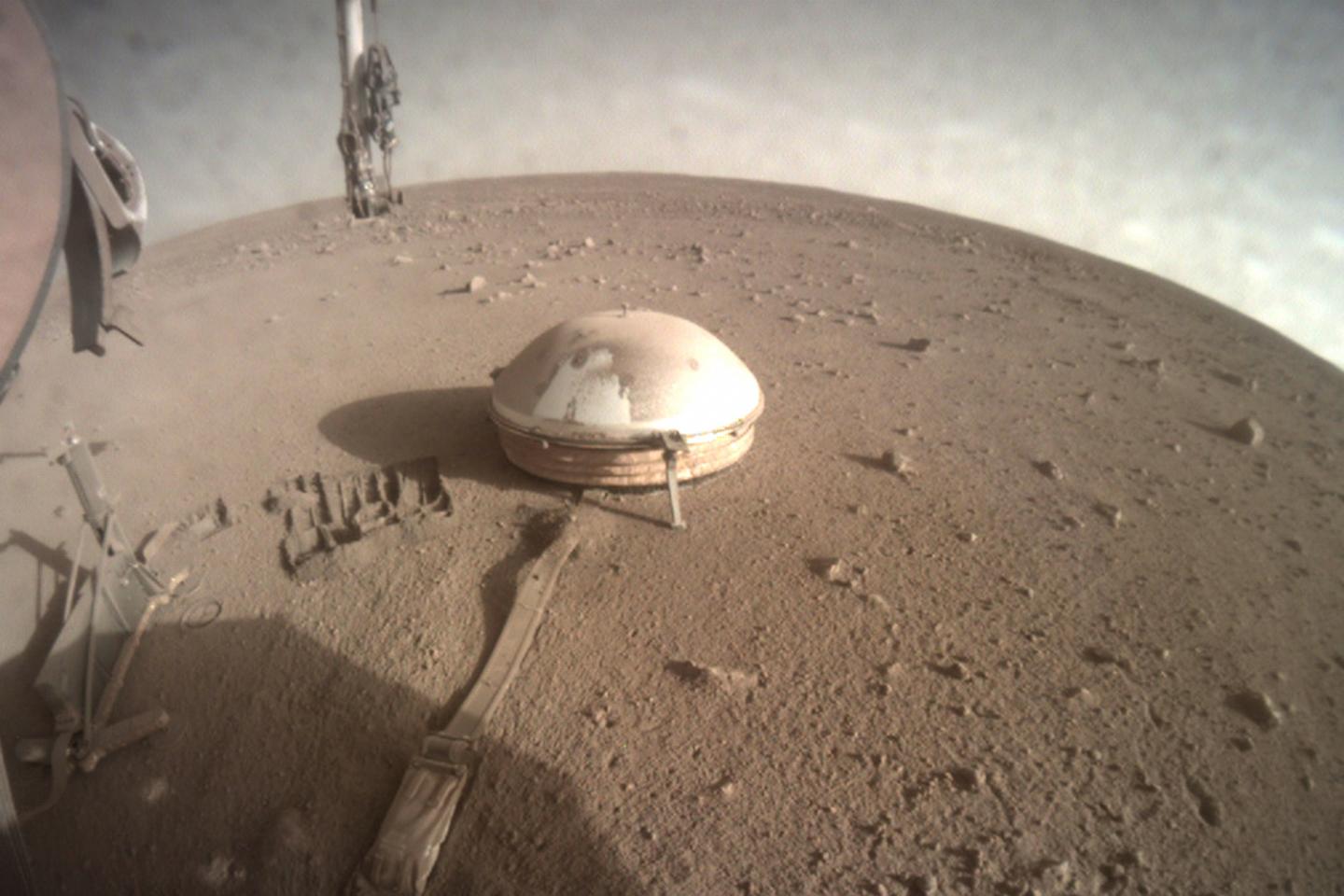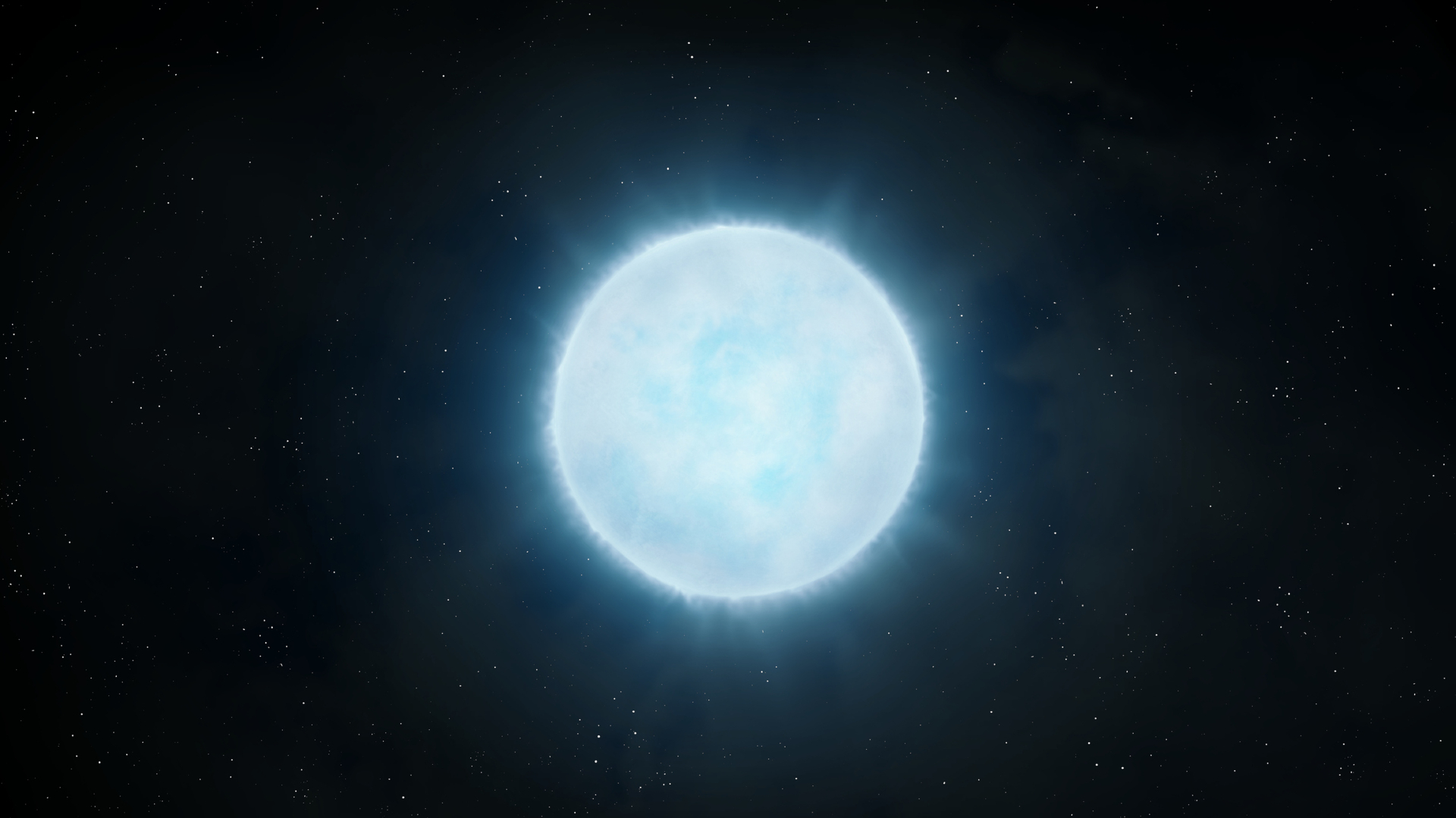Marsquakes reveal Red Planet has surprisingly large core, thin crust
Mars keeps surprising us.

Quakes on Mars have unveiled its interior to an unprecedented degree, revealing surprising details about the Red Planet's crust, mantle and core.
Measurements taken by NASA's InSight (Interior Exploration using Seismic Investigations, Geodesy and Heat Transport) lander have uncovered details, including a crustal layer that varies dramatically from previous understanding, a mantle less dense than the surface and a core that is larger and less dense than previously estimated, new results reveal. These findings will impact our understanding not only of the Red Planet today, but also how it and other rocky worlds formed and evolved in our solar system, scientists said.
Seismology on Earth is a relatively young science, with the first measurements of the mantle made in 1889 when scientists in Germany recorded an earthquake that originated in Japan. Apollo astronauts placed four stations on the moon that could only capture the main seismic waves. The Viking landers of the 1970s attempted to measure Martian quakes, but interference from the wind meant that no definite signals were recovered.
Mars InSight in photos: NASA's mission to probe core of the Red Planet
So, while scientists have gained significant insights into Earth's interior and a peek into the moon, other rocky worlds have remained a mystery. Scientists have instead relied on Mars meteorites, surface exploration, and gravity and magnetic field observations from orbiters to tentatively characterize the Martian interior.
"That's comparable to having a locked box and trying to determine what's inside by just having some general information from the outside," Brigitte Knapmeyer-Endrun, a researcher at the University of Cologne in Germany, told Space.com by email. Knapmeyer-Endrun is first author on one of three InSight studies published today (July 22) in the journal Science.
In contrast, InSight's seismic measurements are comparable to X-raying the box to take a more complete view.
Breaking space news, the latest updates on rocket launches, skywatching events and more!
Thick or thin crust
For decades, landers and orbiters have probed the Martian crust, sifting through the surface material in an effort to establish what the planet is made of and just how thick or thin its outer layer might be. Theorists have used those measurements, along with analyses of Mars meteorites, to create both thick- and thin-crust models of the planet. Some models estimate the crust to be as thick as 68 miles (110 kilometers), significantly thicker than Earth's crust, which ranges between 3 and 44 miles (5 and 70 km) thick.
Now, InSight has used seismic waves to measure the crust directly beneath its landing site, determine that at least two but possibly three layers hide beneath the surface, and calculate an average crustal thickness across the entire planet.
When an earthquake — or marsquake — occurs, seismic waves echo through the planet. Primary, or P-, waves lead off, traveling quickly through the layers. P-waves are compressional waves similar to sound waves traveling through the air. They are followed by secondary, or S-, waves, shear waves whose vibration is perpendicular to the wave's direction, like the string of a guitar.
Measuring the amount of time between P- and S-waves can allow researchers to determine how far away the quake occurred, as the arrival time increases farther from the origin. The waves also travel at different speeds through different substances, further shifting the arrival times. Finally, waves can also be trapped and reflected by layers, providing additional information about the interior of a planet.
"What is for certain is that beneath InSight, we have at least two layers in the crust," Knapmeyer-Edrun said. The top layer is about 6 miles (10 km) thick. Waves traveling through the crust alone travel much more slowly than anticipated based on observations of the surface, InSight's observations have shown.
The top "layer is probably fractured up by repeated meteorite impacts over the eons since the formation of the crust, and could also be chemically altered," Knapmeyer-Endrun said.
The second layer extends to a depth of roughly 12 miles (20 km) and is likely a more pristine layer than the first, shielded from impacts and surface alteration.
The next layer down is more uncertain. Knapmeyer-Endrun said that it's possible there is a third crustal layer, extending to a depth of approximately 24 miles (39 km) and made up of a different material than the top two. Or the interior could transition into the mantle at this point.
"It requires more studies to really pinpoint what the individual layers exactly are," she said.
Using InSight's marsquake data and planet-wide gravitational measurements, the researchers determined that the average thickness of the Martian crust lies between 14 and 45 miles (24 and 72 km).
The new results are generally compatible with both thick- and thin-crust models of Mars. But Knapmeyer-Endrun said it was the support of a crust just 12 miles (20 km) thick potentially lying beneath the lander that was most surprising. Such a thickness "would be thinner than previous predictions and is hard to reconcile with some of the previous models," she said.
That number isn't definite, however, as a thicker 24-mile (39 km) crust would also explain the results. InSight will continue to study marsquakes until the end of its extended mission in 2022, potentially doubling the number of shakeups observed.
"With more marsquakes and different types of analysis, we still hope to distinguish between these two scenarios during the extended mission," Knapmeyer-Endrun said.
Related: What is Mars made of?

Molten mantle
In addition to probing the outer shell of the Red Planet, InSight has used lower-frequency waves to measure the upper mantle layer. The second Science study relied on low-frequency waves, which make up only a small part of the quakes measured by the spacecraft. Most of the seismic waves measured by InSight have a high frequency and are likely related to events occurring close to the lander. Low-frequency events travel farther, allowing researchers to probe deeper into the planet.
"The further away you are, the deeper the waves will travel, and that's where low-frequency events come in," Amir Khan said by email. Khan is a researcher at ETH Zürich and the University of Zurich, Switzerland, and lead author of the second paper.
The new results reveal that the mantle extends 248 to 373 miles (400 to 600 km) down, more than twice as deep as Earth's mantle. That could come in part because Mars has only a single continental plate compared to the seven mobile plates found on Earth. While chemically similar to Earth's upper mantle, the Martian mantle contains more iron than a comparable slice of our planet.
Using data from studies of the mantle, Khan and colleagues modeled how Mars cooled and separated into layers in the past. Knapmeyer-Endrun and her team independently performed a similar study using data taken from the crust. Both teams found that creating the layers seen today required the crust to be 13 to 21 times more enriched in radioactive heat-producing elements (HPEs) than the mantle, higher than previous estimates made by measuring the surface materials with NASA's Mars Global Surveyor (MGS) orbiter.
"[MGS] only measured the radioactive content of the surface, but now we've found that the crust as a whole is enriched relative to these earlier estimates, meaning that what we see on the surface is not the same deeper in the crust," Khan said.
The dust that builds planets contains traces of radioactive elements. Heat from formation and the decay of these elements leads to melting, with the HPEs disproportionately rising to the top and getting deposited in the newborn crust. It's expected, then, that the crust will hold more HPEs than the mantle beneath.
But a thinner crust would require a larger enrichment of HPEs, with what Knapmeyer-Endrun calls "potentially interesting consequences for the understanding of the differentiation of Mars."
The implications will continue to evolve as theorists struggle to reconcile the new data with their understanding of planet formation and evolution.
Our solar system: A photo tour of the planets

Bigger core
While the first two new studies focused on seismic waves that traveled directly through the layers, a third study examined those that bounced off Mars' central core. S-waves are unable to travel through liquids and gas and so bounce off of the liquid core, reflecting to the surface. By measuring these reflected waves, researchers determined that the core starts nearly halfway to the center of the planet, at a depth of about 969 miles (1560 km), a number at the large end of previous estimates.
A larger core suggests one that is less dense than previously thought. The new measurements of core density are lighter than iron, a finding that requires an infusion of lighter elements such as sulfur, carbon, hydrogen or oxygen.
"If [these light elements] are in the core in large quantities, we might need to revisit our models of how the planet formed to allow them to end up in the core and not in the mantle, or, in the case of hydrogen, leaving the planet to the atmosphere early on," said the lead author of the third study, Simon Stähler, who's also based at ETH Zürich.
So far, all of the quakes detected by InSight are below magnitude 4, small enough that on Earth humans would only notice the shaking if they were close to the source. These smaller quakes are bent when they enter the core, "similar to how light is bent when it goes through the surface of a lake," Stähler said. That means quakes from Mars' Tharsis region, thought to have the highest seismic activity on the planet, have remained undetected.
But if InSight can detect and correctly identify a quake of magnitude 4 or higher in the active Tharsis mountains, it might be able to detect waves that travel successfully through the core, allowing researchers to better narrow down the light elements tucked away inside.
Since the core is larger than previously thought, the mantle must be thinner, suggesting that Mars lacks the dense insulating layer of the mineral bridgmanite that Earth possesses. The absence of this layer would allow the core to cool more rapidly, affecting the planet's magnetic field.
Scientists know that the Red Planet once had a magnetic field, one that helped it hold onto its early atmosphere. As the core cooled, the field weakened and Mars lost not only the vast majority of its atmosphere but also the liquid water that once flowed across its surface.
"Dynamos require fluid motions in the metallic core to generate magnetic fields," said Sabine Stanely, an expert in the Martian dynamo at Johns Hopkins University in Maryland who was not part of the new research. "How the Martian dynamo was driven is still an open question."
One mechanism for driving the motion of the core is the rapid movement of heat from the core through the mantle. The lack of insulation from bridgmanite could help make this possible.
Another possibility is compositional convection. When a core has light elements, they can rise through the molten core, their motion generating a magnetic field. As iron solidifies, it will sink to the center of the core, also potentially creating a dynamo that can drive a magnetic field.
Khan said he was most surprised by the presence of a low core density. The presence of lighter elements suggested that Mars may have accreted very early and on a rapid timescale. The planet may also have collected material from the outer solar system, where light elements were more plentiful.
"These observations have fueled speculation that Mars might represent a stranded planetary embryo that depicts the chemical characteristics of the solar nebula [the gas and dust that birthed the sun and planets] at the location of the orbit of Mars," Khan said.
Understanding how to get the light elements into the core is "not straightforward," he said, with hydrogen a particular problem.
"We're working on this problem and might need some type of out-of-the-box thinking," Khan said.
10 of 1,000
InSight landed on Mars in November 2018 and began recording marsquakes in February 2019. In that time, it has detected more than a thousand distinct seismic events. So why has it taken more than two years to understand the planet's interior?
Part of the problem is sorting the results from the noise. According to Knapmeyer-Endrun, more than half the recorded events are super-high frequency, suggesting that they are caused not by quakes but by temperature swings. These tremors are too shallow to provide information on the layers. Another fraction of the quakes are high-frequency events that cannot be used to study the layers. They aren't junk — Knapmeyer-Endrun said they can be used to study shallow structure — but they aren't helpful when it comes to understanding the deeper layers of Mars.
"Less than 5% of all the seismic events reported belong to the low-frequency family and generate waves propagating through the mantle, so they can interact with the boundary between the mantle and crust below InSight and tell us something about the depth of this interface," Knapmeyer-Endrun said. And not all of those are of high enough quality to allow researchers to glean their location, a requirement for the new research.
"This is similar to the situation on Earth, where there are about 100,000 quakes with a magnitude 3.0 or higher recorded somewhere on Earth every year, but only the largest 1% or so would be used for global studies of the interior of the planet," she said.
Out of the more than 1,000 quakes recorded on Mars, the trio of new studies focused on only 10 different quakes.
Additionally, the Martian winter brought higher wind, which drowned out attempts to measure quakes. According to Knapmeyer-Endrun, InSight recorded very little seismic activity for more than 200 days, leading the team to worry that they might not be able to see any more quakes before the lander ran out of power. Attempts to clean the spacecraft's solar panels improved the situation somewhat, and Insight is back to collecting seismic data.
The final reason for the long delay is the novelty of the tasks the researchers were performing.
"Because it was a rather limited data set and we are the first to attempt this on Mars, we also took more time to look at the data again and again to be extra sure of our interpretations and conclusions," Knapmeyer-Endrun said.
Follow us on Twitter @Spacedotcom or Facebook.

Nola Taylor Tillman is a contributing writer for Space.com. She loves all things space and astronomy-related, and always wants to learn more. She has a Bachelor's degree in English and Astrophysics from Agnes Scott College and served as an intern at Sky & Telescope magazine. She loves to speak to groups on astronomy-related subjects. She lives with her husband in Atlanta, Georgia. Follow her on Bluesky at @astrowriter.social.bluesky
